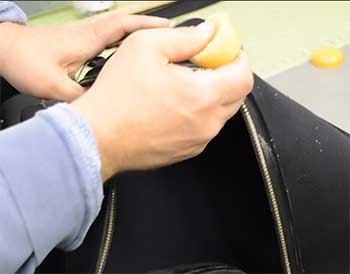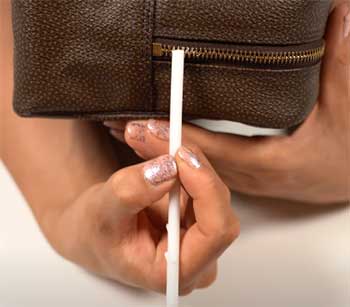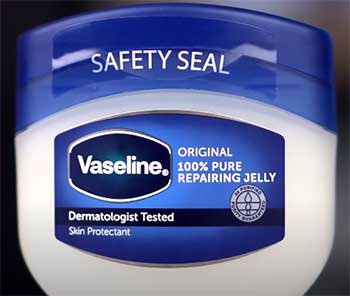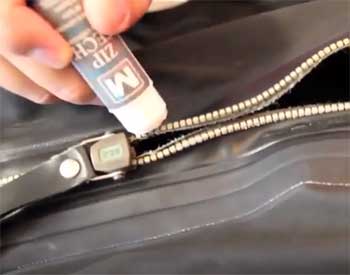Yeti coolers come with convenient zipper lubricants to keep your product functional without any problem. However, if the zipper is stuck and you cannot seem to find the grease for the job, you may start considering alternatives.
Before you buy another zipper lubricant, we suggest having a look at the possible alternatives and their validity.
Yeti Zipper Lubricant Substitutes To Grease Your Cooler
Here is a list of those alternatives I am about to talk about:
- Beeswax Zipper Lube
- Candle
- Vaseline
- Soap
- Silicone Grease
Let’s see how you can use them for your Yeti zipper.
- Beeswax Zipper Lube

Beeswax is rich in natural oils that can easily open any zipper alongside protecting it in other ways lubricants simply cannot.
This doesn’t go to say that Yeti-specific lubricant isn’t good enough for the job but beeswax has a certain quality to it.
Made up of three main components, beeswax is the perfect alternative to Yeti zipper lubricant.
The first component is palmitate, a palmitic acid ester, a common fatty acid. Ester stands for salt. This is great grease too.
Palmitoleate is the second element which is yet another ester of palmitoleic acid. It is related to the first fatty acid and a naturally occurring oil.
The final component of beeswax is oleate esters, esters of oleic acid, the last fatty acid. These components combine to grease and protect the cooler zipper.
Another reason beeswax is so amazing is that this is a sustainable method to lubricate a variety of items.
If you are trying to use beeswax in colder climates, try holding the wax for 2 to 3 minutes in your closed fist. This should soften the product and produce the optimum consistency for Yeti zipper lubrication.
Firmly rub the beeswax along the lines of the zipper and make sure to get between the teeth. Keep applying the wax to both sides of the zipper till a thin wax layer forms.
Once done, open and close the cooler zipper thrice or four times.
Also Read: Alternatives To Crossbow Rail Lube.
- Candle

Unlit candle wax acts as a great lubricant for stuck zippers of all kinds, be it jacket or cooler.
Find a birthday candle, votive, or loose taper candle; as long as the candle isn’t lodged inside glass or holder it will work.
Run the candle over the zipper’s teeth, focusing on the areas slightly under and over the slide on the zipper.
Move the slide slowly until it runs free through the two waxed regions.
In case the slide is simply difficult to unzip and zip rather than stuck, run the wax over the entirety of the zipper – teeth and all, only avoiding the fabric parts as well as under the zipper section. Slowly zip and unzip the Yeti cooler zipper several times to ease the process.
With your palm, remove any extra wax. If you don’t have a candle, massage the edge of a dry soap bar on the zipper, then wipe the excess soap away with a paper towel or soft cloth.
- Vaseline

Lip balm or Vaseline works on zippers in a way similar to lubricants.
Opt for a lip balm with no additional color as the dyes on the might stain the fabric around the zipper if any.
Apply a little amount of tube-style chapstick to the zipper teeth at first, moving the zipper slider across the greased area to disperse the balm around.
If you are using Vaseline instead, apply it using a cotton swab or with your finger.
To avoid stains, only apply the balm or Vaseline to the zipper’s toothed area. After lubricating the zipper, wipe away any excess product.
- Soap
Used sparingly, liquid dish soap lubricates stuck or obstinate zippers. Squeeze a tiny quantity of soap onto a cotton ball and dab the zipper teeth just below and above the zipper slide.
Move the slide around the greased sections, then grease the zipper teeth 1″ at a time. Once the zipper is properly coated with soap, run the zipper slip over its whole length.
To avoid the suds from leaking into other portions of the zipped item, use paper towels to dab off the excess soap afterward.
- Silicone Grease

Silicone grease like WD-40 is surprisingly effective in loosening stubborn zippers.
All you have to do is aim the nozzle at the part of the Yeti cooler zipper that’s giving you problems and spray a little product over it.
Wait for a few seconds and repeat. In a few seconds, the zipper should be functional again.
For zippers that are frequently exposed to environmental elements, they may be rust behind the issue.
However, that is rarely the case with zippers on coolers. If you suspect rust issues here, WD-40 has anti-rust and water-resistant properties.
Is Yeti Zipper Lubricant Worth It?

Yeti coolers come with a sealer/lubricant in a lip balm applicator. It’s somewhat stiff to use but equally effective.
Plus, it’s known to be long-lasting and well-built.
While different alternatives do tend to work on cooler zippers, they cannot replace the real lubricant that comes with the cooler.
A lubricant like this was specifically designed for Yeti coolers and this is why you don’t have to worry about compromising the zipper at any point.
If you misplaced the lubricant and need something to use in a pinch, refer to the suggestions above. But Yeti zipper lubricant is surely worth it.
Also Read: Yeti Trailhead Camp Chair Substitutes.
Frequently Asked Questions (FAQs)
Apart from the specific lubricant that comes with the package, Vaseline or colorless lip balm works the best.
Yeti recommends a mixture of water and dish soap. Rinse the zipper with fresh water and thoroughly wipe the inner with a paper towel or cloth. Keep the zipper open for a few days to ensure the water inside dries out.
Work the lubricant up and down the slide of the zipper and wiggle it around to completely disperse the product.
Keep the lubricant in the dock for storage.
Bottom Line
As it turns out, there are many viable substitutes to zipper grease, but you have to choose the best Yeti zipper lubricant alternative from the aforementioned choices.
Anything you have available at home should work. Make sure you don’t damage the zipper in the process.

